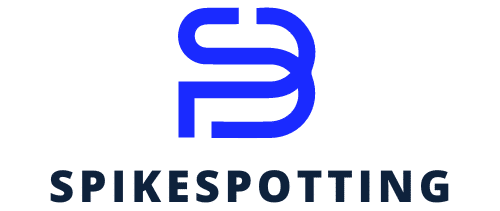What’s the Effect of Different Breathing Techniques on Recovery in High-Intensity Functional Training?

Breathing, it is an essential part of life, but did you know that it can significantly impact your performance and recovery in high-intensity functional training (HIIT)? Correct breathing can control your heart rate, distribute more oxygen to your body and improve your endurance. It’s not only the scholar’s corner that discusses the importance of breathing during exercise; even athletes swear by its effectiveness. In this article, we’ll explore different breathing techniques and their effects on recovery during HIIT. We will highlight information gathered from credible sources such as Google Scholar, PubMed, and CrossRef.
The Importance of Breathing During Exercise
Before delving into the different breathing techniques and their effects, let’s first understand the importance of breathing during exercise. When you exercise, your muscles work harder, your heart rate increases, and your body requires more oxygen. Improper breathing can lead to exhaustion, decreased performance, and slower recovery.
Cela peut vous intéresser : What Are the Innovative Approaches to Stroke Rehabilitation for Paralympic Swimmers?
Respiration plays a crucial role in supplying oxygen to our blood. The oxygen-rich blood is then circulated throughout the body, nourishing our muscles and providing the energy required for exercise. Simply put, the more efficiently you breathe, the better you perform and recover.
Breathing Techniques and Their Effects
Now that we understand the importance of breathing during exercise, let’s discuss different breathing techniques and how they impact your recovery and performance during HIIT.
En parallèle : Can Virtual Reality Simulation Improve Decision Making in American Football Quarterbacks?
Diaphragmatic Breathing
Diaphragmatic breathing, or belly breathing, is a technique that involves inhaling deeply into your diaphragm rather than shallow breathing in your chest. This technique maximizes the amount of oxygen your body receives during each breath. According to studies indexed in PubMed and PMC, practicing diaphragmatic breathing during HIIT can help lower your heart rate, increase oxygen supply, and improve recovery time.
Rhythmic Breathing
Rhythmic breathing is a technique where you control your breath to match your movements. For instance, in running, you might inhale for three steps and exhale for two. This technique helps maintain a steady heart rate, reducing the risk of injuries and fatigue. Rhythmic breathing also improves your performance by increasing your focus and pace during high-intensity workouts. Google Scholar and CrossRef provide multiple studies proving the effectiveness of rhythmic breathing in enhancing athletic performance and recovery.
Box Breathing
Box breathing, also known as four-square breathing, involves inhaling, holding your breath, exhaling, and holding your breath again, each for a count of four. This method is excellent for recovery as it engages your parasympathetic nervous system, slowing your heart rate and promoting relaxation.
Pursed-lips Breathing
This technique involves inhaling slowly through your nose and exhaling through pursed lips, like you’re blowing out a candle. Pursed-lip breathing helps control your breath, keeping your heart rate steady and preventing breathlessness during high-intensity workouts.
The Role of Breathing in Heart Rate and Endurance
Your heart rate and endurance are critical factors in your performance and recovery during HIIT. Proper breathing techniques can help control your heart rate, ensuring it doesn’t get too high during your workout. A steady heart rate allows you to train longer and harder, improving your endurance.
When you breathe correctly, your body efficiently absorbs oxygen and eliminates carbon dioxide, preventing the buildup of lactic acid in your muscles. This regulation of lactic acid means that you won’t tire as quickly and can recover faster post-workout. So, if you’re looking to boost your endurance and speed up your recovery, start by focusing on your breath.
The Science behind Breathing Techniques
Scientific research provides the factual backbone for the effectiveness of different breathing techniques during HIIT. Studies indexed in PubMed and CrossRef report that diaphragmatic breathing can help manage physiological responses to stress, thus aiding in post-exercise recovery.
According to a study published in PMC, rhythmic breathing can improve the cardiovascular efficiency of athletes. Another research study indexed in Google Scholar reveals that box breathing can modulate cardiorespiratory parameters, promoting recovery and relaxation.
The science clearly showcases the power of breathing in exercise performance and recovery. Breathing techniques help manage autonomic responses to exercise, thus boosting performance and aiding in recovery. If you’re an athlete or just a fitness enthusiast, a little attention to your breath can go a long way in improving your HIIT results.
Remember, your breath is a powerful tool that can transform your HIIT workouts and overall fitness regimen. Start incorporating these breathing techniques into your training routine and experience the difference. After all, in the quest for peak physical performance, every breath counts.
Advanced Breathing Techniques for HIIT
As we delve deeper into the subject, we encounter more complex and specialized breathing techniques, specifically geared towards athletes and fitness enthusiasts. These techniques, backed by studies found on Google Scholar, CrossRef, and PubMed, are designed to optimize heart rate, blood pressure, and carbon dioxide management during high-intensity functional training.
Breath Holding and the Mammalian Dive Response
Breath holding might seem counterintuitive during exercise, but it has its place. It harnesses the mammalian dive response, a reflex that enables marine mammals to stay underwater longer. When humans hold their breath, especially after exhaling, blood pressure increases, heart rate slows, and blood is diverted to the brain and heart. Trained athletes use this technique to increase their tolerance to carbon dioxide and improve their performance. A systematic review on PubMed highlights the potential of breath holding to increase lung capacity and improve efficiency in oxygen usage.
Slow Breathing
Slow breathing is another method to control heart rate and manage stress during high intensity workouts. Breathing at a slow, controlled pace can help lower blood pressure and heart rate variability, reducing stress on your cardiovascular system. This technique can be particularly useful during the recovery phase of HIIT, aiding in faster and more efficient recovery. PubMed and Google Scholar feature multiple studies indicating the positive effects of slow breathing on cardiovascular health and exercise recovery.
Conclusion: Breathing Correctly Enhances HIIT Performance and Recovery
Throughout this article, we have explored various breathing techniques, from simpler methods like diaphragmatic and rhythmic breathing to more complex ones like breath holding and slow breathing. All these techniques have a common goal: to optimize the oxygen supply, control heart rate, and manage carbon dioxide during high-intensity functional training.
Scientific research from databases such as Google Scholar, CrossRef, and PubMed provides an evidential basis for the effectiveness of these breathing techniques. They not only boost performance by enhancing cardiovascular efficiency and focus, but also aid in faster recovery by managing the autonomic responses to exercise and preventing exhaustion.
But breathing techniques aren’t merely a tool for athletes. Even if you’re a fitness enthusiast or a beginner in the world of HIIT, learning to control your breath can make a noticeable improvement in your workouts. It might take some practice to master these techniques, but the payoff will be worth it. In the quest for improved performance and faster recovery, remember: every breath matters.
In the light of these findings, the next time you dive into your workout, don’t forget to breathe – the right way!
